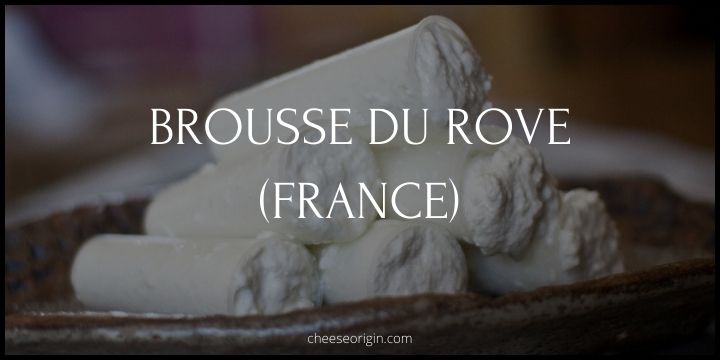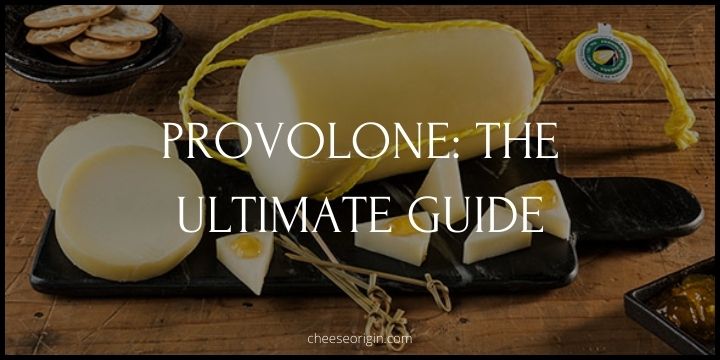What is Tomme de Savoie? The Quintessential Alpine Cheese

Today, we delve into the heart of the French Alps, unearthing the secrets of a cheese that embodies the spirit of its rugged and beautiful origin – the Tomme de Savoie. This semi-soft, artisanal marvel is as versatile as it is flavorful, with a rich heritage rooted in tradition.
Tomme de Savoie is not just a cheese; it’s an experience, a taste of alpine pastures, centuries-old cheesemaking techniques, and the simple yet profound pleasures of life in the Savoie region of France.
Quick Facts About Tomme de Savoie
| Fact | Detail |
|---|---|
| Origin | Savoie, France |
| Cheese Type | Semi-soft, artisanal |
| Made From | Cow’s milk |
| Texture | Dense and firm with small holes |
| Flavor Profile | Nutty, grassy, slightly tangy |
| Rind | Natural, grayish-brown, often covered in mold |
| Ageing Time | At least 2-4 months |
| Fat Content | Typically around 20-45% |
| Pairings | Full-bodied red wines, crusty bread, charcuterie |
| Serving Temperature | Room temperature for best flavor |
| Production Method | Traditional, handcrafted |
| Cultural Significance | A classic representation of French Alpine cheeses |
| Storage | In a cool, humid environment, preferably a cheese cave or the vegetable drawer of a refrigerator |
| Nutrition | High in protein and calcium, contains lactose |
| Availability | Year-round, but best in summer and fall when cows are grazing on alpine pastures |
What is Tomme de Savoie?
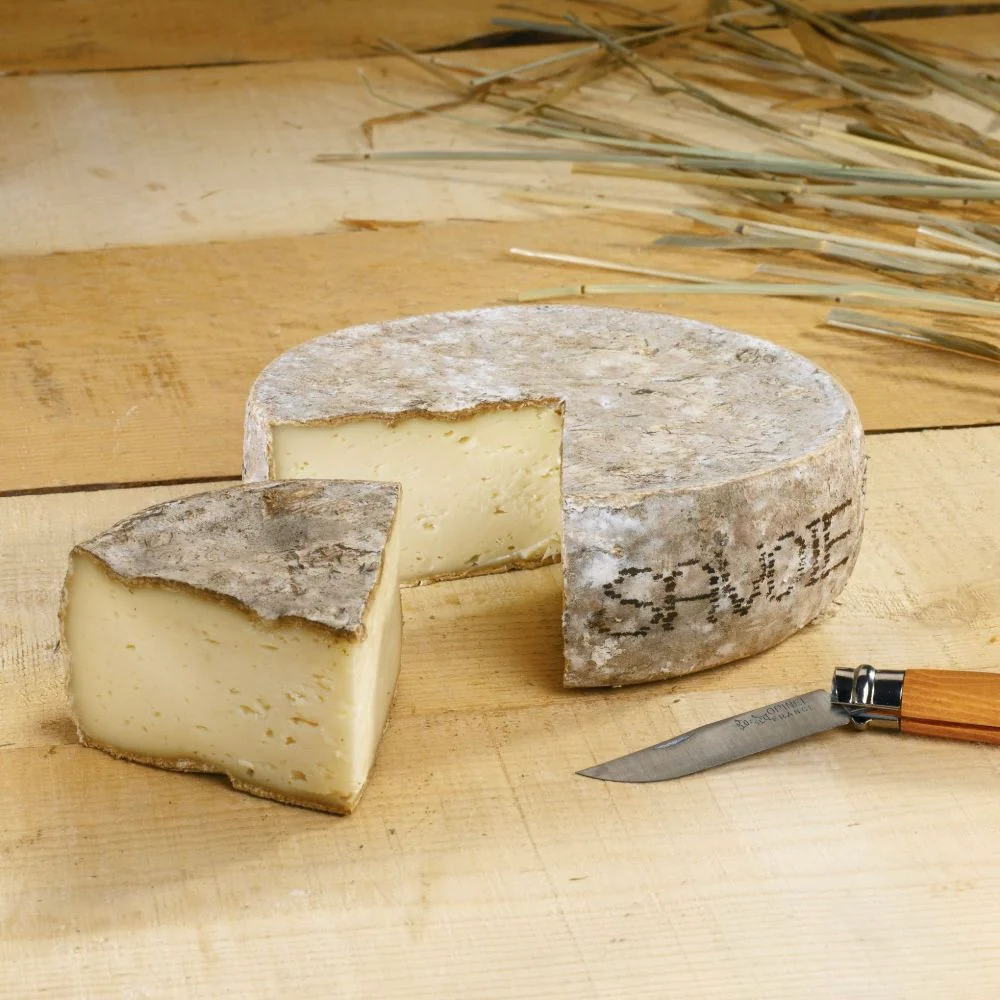
Tomme de Savoie, a cheese hailing from the French Alps, is a culinary treasure that perfectly encapsulates its native Alpine terroir. This upland variety of Tomme cheese is made from raw, skimmed cow’s milk, a process that lends it a unique characteristic. After the cream is drained to make butter, the remaining milk, containing 20-40% fat, is used to create this delightful cheese.
This semi-soft cheese is noted for its mild yet distinct flavor profile. It’s tangy and rustic, with subtle notes of wet straw and dried fruit. The taste of the cheese is also influenced by the quality of the milk, which varies according to the seasons and the diet of the cows.
The texture of Tomme de Savoie is equally enticing. It often has tiny holes and is very savory with a mild aroma. Some cheese connoisseurs point out that this cheese is noted for its “fruity” nuances. The rind is natural, grayish-brown, often mottled with yellow and red spots.
Tomme de Savoie is not just a cheese; it’s a testament to the traditional cheesemaking practices of the Savoy region. It’s a farmhouse-style cheese, displaying a bouncy, pliant texture and taste of milk, hay, earth, and nuts. Each wheel of Tomme de Savoie tells a story of the land it comes from and the people who painstakingly craft it. Whether enjoyed on its own, paired with full-bodied wine, or used in cooking, Tomme de Savoie is a flavorful journey through the French Alps.
What Does Tomme de Savoie Taste Like?
Tomme de Savoie’s taste is often described as grassy and nutty, with an earthy undertone that enhances its rustic charm. The flavor can vary quite significantly, with some detecting notes of hazelnut, while others identify a mildly grassy taste.
The cheese’s rind contributes to its overall flavor profile as well. It is perfectly edible, offering a soft, almost fuzzy texture and an added earthy taste. The pate of the cheese is often white to light yellow, covered with an ivory to yellow rind.
When young, Tomme de Savoie’s flavors are particularly fresh, with hints of grassy and citrus notes, making it an excellent pair with young and fresh wines like Pinot Blanc and Pinot Gris. A bite into this cheese reveals subtle earthy notes and a sweet undertone.
After 2 to 4 months of maturing, the texture of Tomme de Savoie becomes pliable and firm, and the flavor develops a deeper complexity. It becomes nuttier, retains its grassy characteristic, and gains hints of mushroom and citrus. This cheese is not just food; it’s a sensory journey through the lush pastures and rich culinary traditions of the Savoie region in France.
Tomme de Savoie Tasting Notes
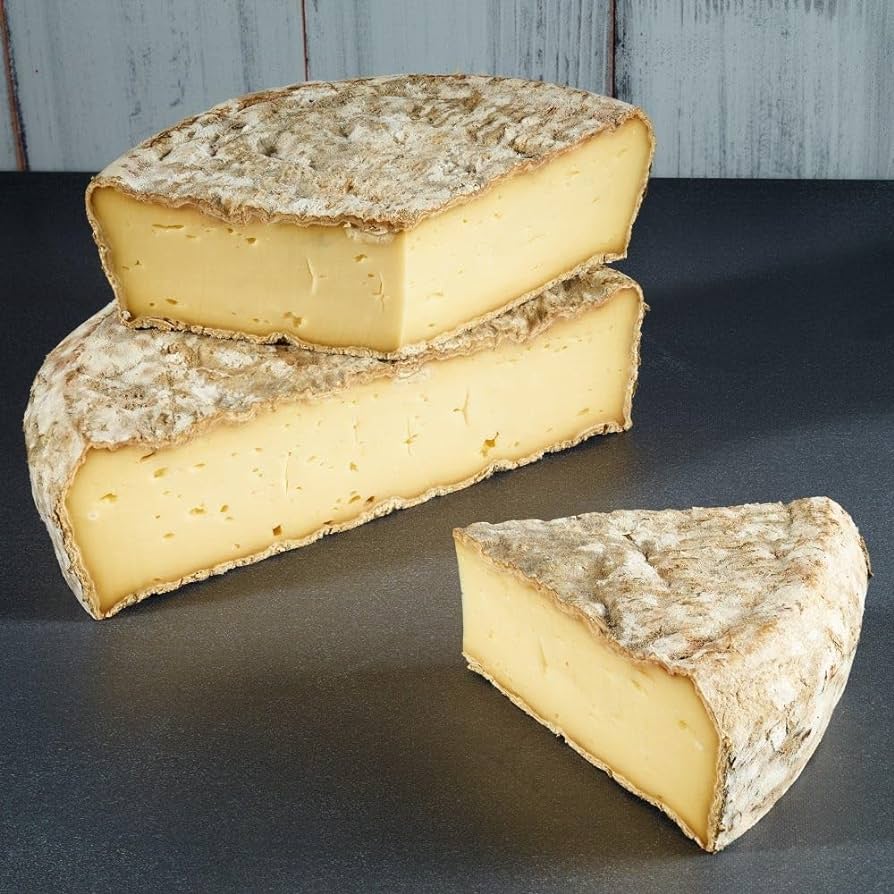
- Appearance: Tomme de Savoie has a rustic, mottled gray-brown rind. The interior pate is creamy-white to pale yellow and dotted with small holes.
- Texture: This cheese is semi-soft and firm with a slightly pliable texture. It also has a dense consistency that becomes more pronounced as the cheese ages.
- Smell: It has an earthy, barnyard aroma with hints of fresh-cut hay and cow’s milk. Some people also sense a slight smell of a cellar or damp cave.
- Taste: The flavor of Tomme de Savoie is complex and layered. Initially, it tastes mildly tangy and nutty, with a grassy undertone. As it matures, the taste develops into a rich blend of earthy and mushroom flavors, with a lingering note of citrus.
- Rind: The rind of this cheese is edible and contributes to its overall flavor. It offers a contrasting earthy taste that complements the cheese’s inner paste.
- Aftertaste: The finish is smooth and long-lasting, leaving a pleasant, somewhat fruity aftertaste in the mouth.
- Pairings: Tomme de Savoie pairs well with full-bodied red wines, crusty bread, and charcuterie. It can also be paired with light white wines or beers.
How to Eat Tomme de Savoie?
Tomme de Savoie is a versatile cheese that can be enjoyed in numerous ways:
- On its own: Tomme de Savoie is often savored as it is, allowing its complex flavors to shine.
- Charcuterie: This cheese pairs excellently with charcuterie, enhancing the flavors of both the cheese and the meat.
- Eating the rind: The rind of Tomme de Savoie is perfectly edible and can be eaten. Some cheese lovers find the rind one of the best parts as it complements the milky and slightly tart paste of the cheese.
- In Baked Goods: Tomme de Savoie can also be used in baking. It’s great in recipes like Dauphinoise and Tomme de Savoie Tartelettes.
- Sandwiches: This cheese is commonly used in sandwiches in France, adding a rich flavor to the bread.
- With Coffee: In the Savoie region, locals are known to enjoy this cheese with their coffee as an afternoon snack.
How is Tomme de Savoie Made?
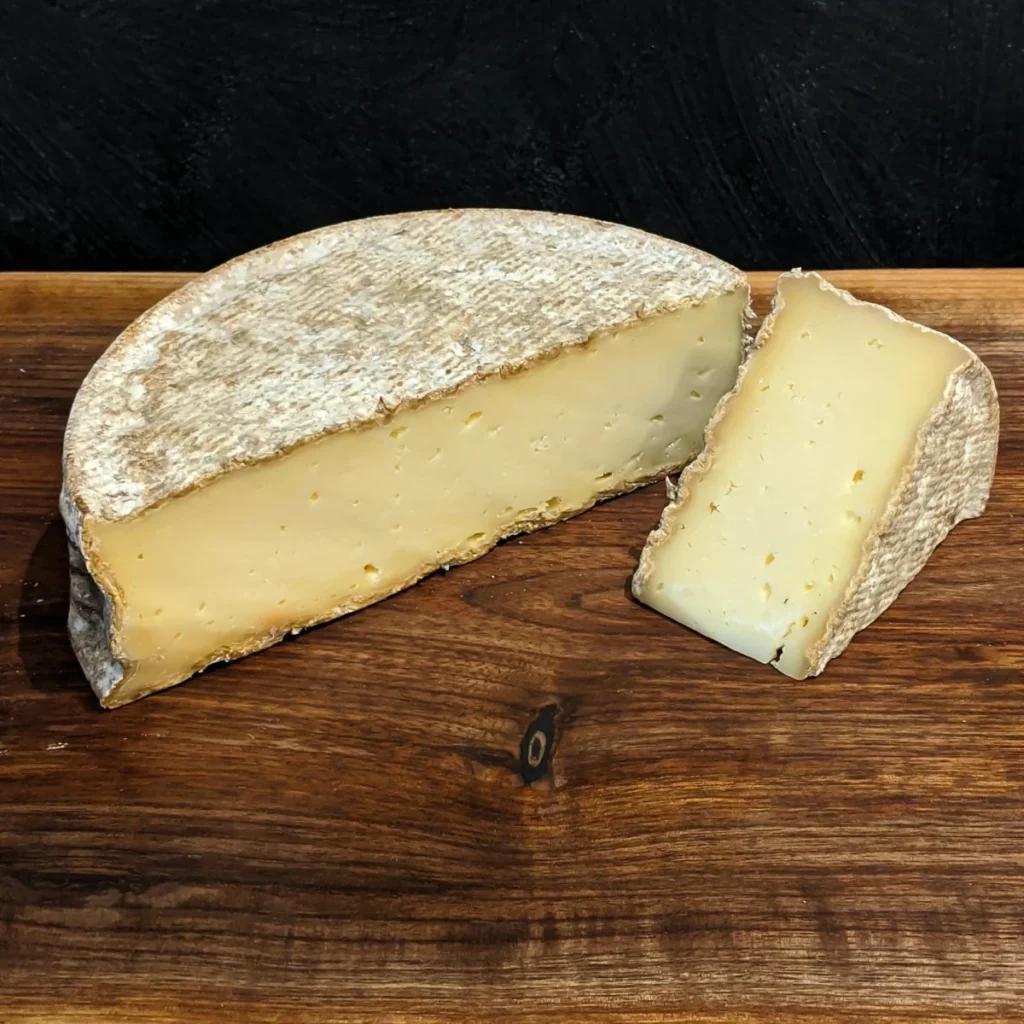
Tomme de Savoie requires a specific method of production to achieve its unique taste and texture:
- Milk Selection: Tomme de Savoie is typically made from cow’s milk. The milk used can be either raw or pasteurized, depending on the specific regulations of the region. It’s often made from the skim milk left over after the cream has been used to make butter or richer cheeses.
- Curdling Process: The milk is heated and then mixed with rennet, which causes it to coagulate and form curds.
- Pressing: The curds are cut into small pieces and then pressed to remove the whey. The cheese is then shaped into wheels.
- Salting and Aging: The cheese is salted to enhance flavor and help in preservation. After salting, the cheese is aged for several months in a cool, humid cellar. During this time, the cheese develops its characteristic flavors of citrus, mushroom, and a hint of cellar.
- Rind Formation: Over time, a natural rind forms on the exterior of the cheese. This rind contributes to the overall flavor profile of the cheese.
- Final Product: The result is a semi-soft cheese with a suede-like, gray/tan rind and a mild, clean flavor.
10 Best Tomme de Savoie Substitutes
| Cheese | Short Description | Short Tasting Profile |
|---|---|---|
| Tomme Crayeuse | A semi-soft, cow’s milk cheese from France. | Rich and slightly tangy with a hint of earthiness. |
| Saint Nectaire | A French cheese made from cow’s milk. | Nutty and mushroomy flavor with grassy notes. |
| Muenster | An American cheese made from cow’s milk. | Mild, creamy flavor with a smooth, soft texture. |
| Cheshire | The oldest known cheese from England. | Slightly salty, crumbly texture with a milky flavor. |
| Pecorino Romano | An Italian cheese made from sheep’s milk. | Salty, sharp and rich in flavor. |
| Ossau Iraty | A French cheese made from sheep’s milk. | Nutty and fruity with a firm and creamy texture. |
| Etorki | A sheep’s milk cheese from the French Basque region. | Sweet and nutty with a smooth, velvety texture. |
| Morbier | A French semi-soft cheese made from cow’s milk. | Creamy and slightly bitter with a distinctive layer of ash in the center. |
| Neufchâtel | One of the oldest cheeses in France. | Soft and crumbly with a slight tanginess. |
| Taleggio | An Italian cheese made from cow’s milk. | Fruity tang, with a strong aroma and a very soft, creamy texture. |
What Pairs Well With Tomme de Savoie?
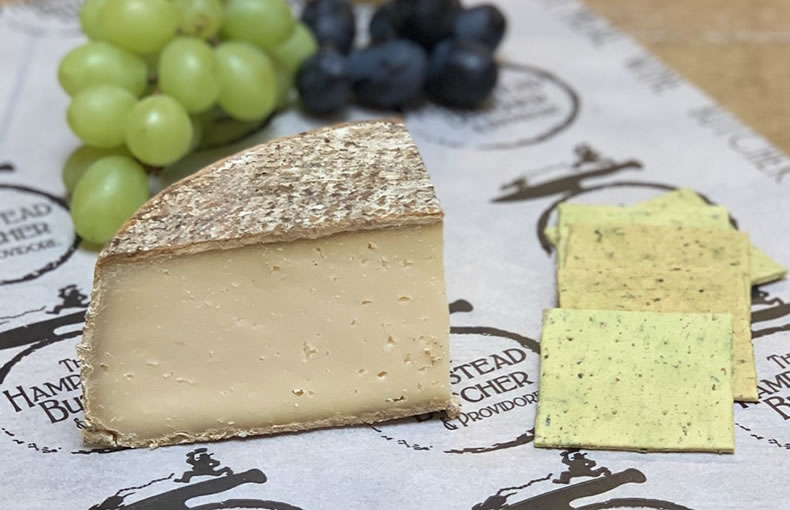
Food that goes well with Tomme de Savoie:
| Food Category | Foods |
|---|---|
| Fruits | Apples, Pears, Grapes, Dried Fruits (like figs and apricots) |
| Breads | French Baguette, Sourdough, Whole Grain Bread, Crackers |
| Cured Meats | Prosciutto, Salami, Spanish Chorizo |
| Nuts | Almonds, Walnuts, Pecans |
| Condiments & Spreads | Fig Jam, Honey, Quince Paste |
| Vegetables | Pickles, Olives, Roasted Red Peppers |
| Desserts | Dark Chocolate, Berry Tart, Apple Pie |
Also read: What Fruit Goes on a Charcuterie Board?
Beverage that goes well with Tomme de Savoie:
| Beverage Category | Beverages |
|---|---|
| Wine | Beaujolais, Chardonnay, Pinot Noir, Côtes du Rhône |
| Beer | Belgian Ales, Stout, Brown Ale |
| Spirits | Brandy, Whiskey |
| Non-Alcoholic | Apple Cider, Pear Juice, Grape Juice |
Also read: Best Wine and Cheese Pairings: The Ultimate Guide
Frequently Asked Questions
Also read:
- What is Vacherin Fribourgeois? The Swiss Cheese with a French Name
- What is Ouleout? A Tale of Taste and Turmoil
- What is Hooligan Cheese? The Bold and the Beautiful
- What is Vieux Boulogne? The Aromatic Adventure of the World’s Smelliest Cheese
- What is Pouligny-Saint-Pierre? A Taste of Central France in Every Bite
- What is Rocamadour Cheese? A Bite-Sized Wonder of French Gastronomy
- What is Selles-sur-Cher? A Taste of France’s Artisanal Heritage

